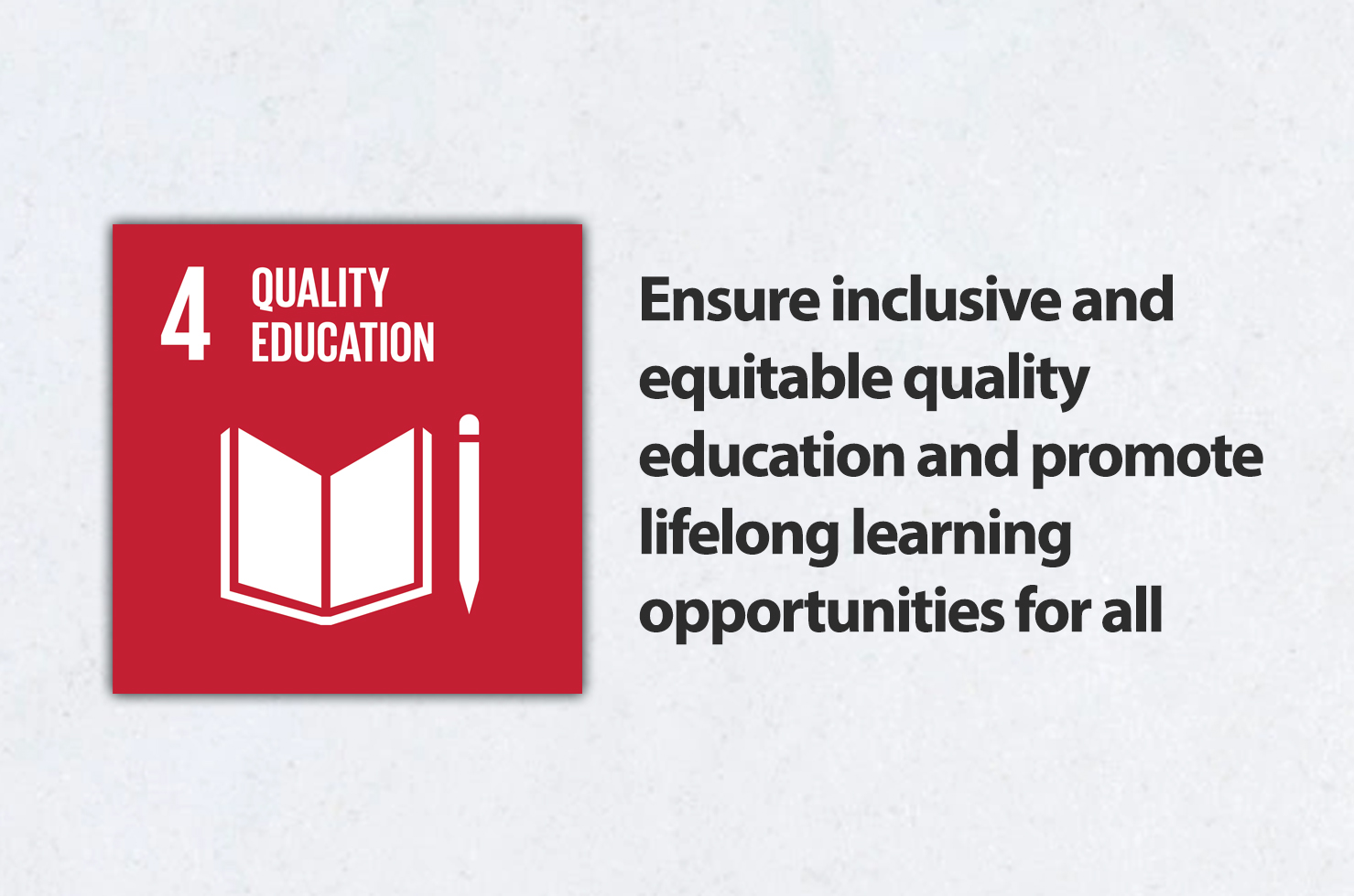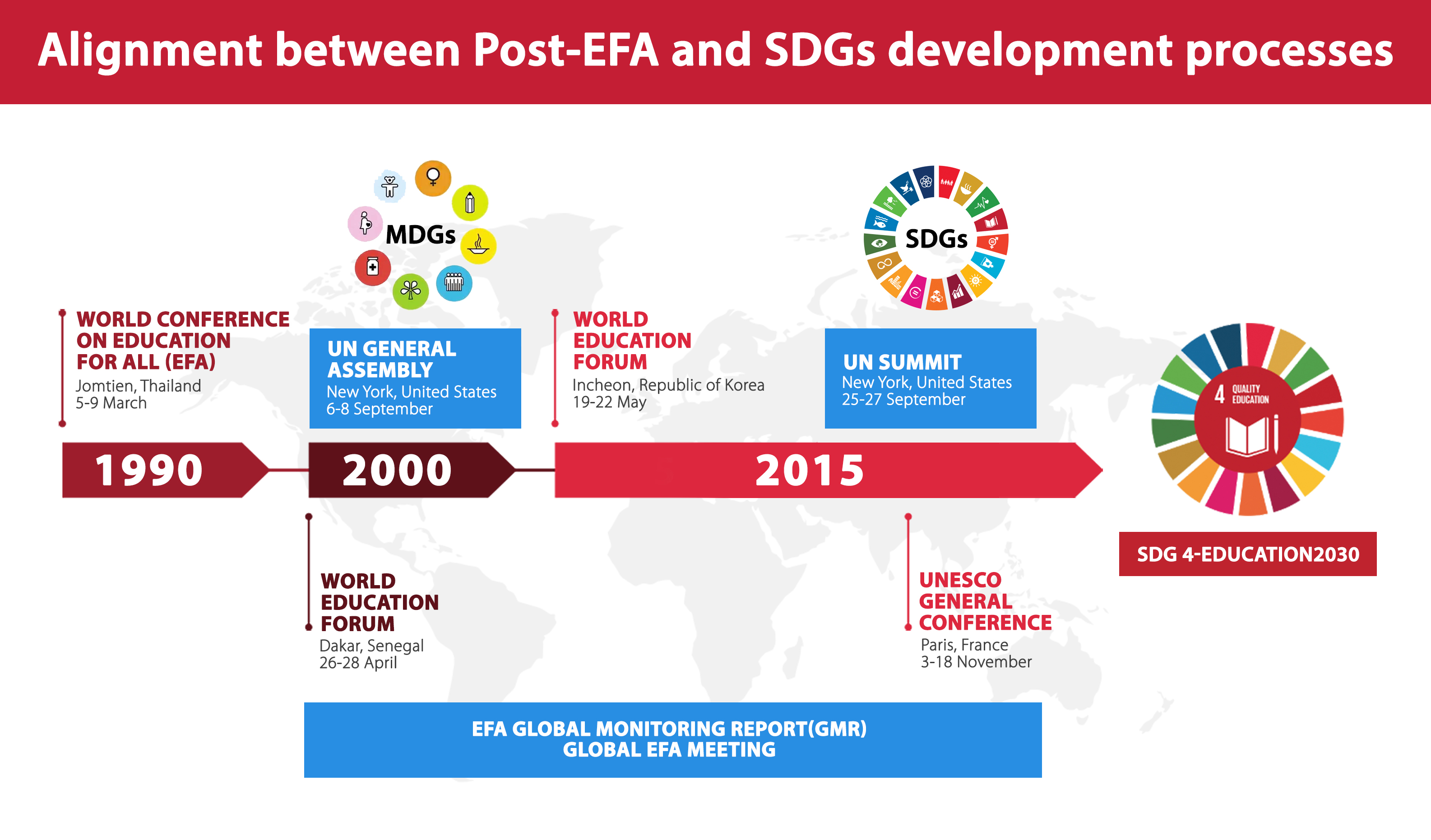
SUSTAINABLE DEVELOPMENT GOAL 4
Ensure inclusive and quality education for all and promote lifelong learning
The UN explains: "Obtaining a quality education underpins a range of fundamental development drivers. Major progress has been made towards increasing access to education at all levels, particularly for women and girls.
Basic literacy skills across the world have improved tremendously, yet bolder efforts are needed to achieve universal education goals for all. For example, the world has achieved equality in primary education between girls and boys, but few countries have achieved that target at all levels of education."
Heads of State, government leaders, UN high-level representatives and civil society met in 2015 at the 70th Session of the United Nations General Assembly and adopted the 2030 Agenda for Sustainable Development. This ambitious agenda, “of the people, by the people, and for the people,” was designed with the active involvement of UNESCO. Education plays a central theme throughout the 2030 Agenda, which includes a stand-alone education goal and education-related targets within 7 other of the 17 Sustainable Development Goals (SDGs). SDG 4 aims to “ensure inclusive and equitable quality education and promote lifelong learning opportunities for all” by 2030. The goal consists of ten targets to guide countries along a transformative path to a sustainable education agenda.
Brief History

The movement for enhanced international cooperation in education began in 1990 with the adoption of the World Declaration on Education for All (EFA) in Jomtien, Thailand, by nearly 150 governmental and non-governmental organizations. The goal was to create universal access to basic education for all children, youth and adults by the end of the decade.
In 2000, when the movement was given a new impetus at the World Education Forum in Dakar, where 164 governments committed themselves to achieving six Education for All goals, integrating the concepts of gender equality and quality education. In the same year, the United Nations adopted the eight Millennium Development Goals, with Goal 2 aiming to achieve universal access to primary education by 2015, continuing the work of the EFA.
In 2015, the World Education Forum in Incheon, Republic of Korea, adopted the Incheon Declaration, which reaffirms the commitments to Education for All in Jomtien and Dakar and is committed to implementing the new Education 2030 global agenda.
What is a target?
A target is a specific, measurable objective which will contribute to achieving one or more of the goals. SDG 4 has ten targets encompassing many different aspects of education. Among them, there are seven targets which are expected outcomes and three targets which are means of achieving these outcomes.
How can the progress of SDG 4 be measured?
SDG 4 has a broader focus than its predecessors, Millennium Development Goal (MDG) 2, “Achieve universal primary education” and MDG 3, “Promote gender equality and empower women”. From a statistical point of view, the MDG framework was built on a set of concrete, measurable indicators and helped to improve national capacity for monitoring in many developing countries. SDG 4 targets, on the other hand, are more complex and contain several concepts that were never measured before at the global level, creating new challenges for developing the indicators which can monitor progress towards SDG 4.
What is an indicator?
Indicators are markers of change or continuity which enable us to measure the path of development, for example. Within the SDGs, they describe the way in which a given unit (pupil, school, country or region) is progressing in relation to a specific target. SDG 4 indicators are multifaceted and many require new methodologies, definitions and calculation methods, as well as considerable changes to national systems reporting data both nationally and internationally.
What is the difference between a target and an indicator?
If you have a personal target, say, to finish a marathon this year, a possible indicator to monitor your progress is the distance that you can run every day during your preparation. Achieving longer distances indicates that you are closer to your target.
However, educational targets are much more complex than running 42 km and often more exhausting. A better analogy could be found in the process of learning how to play a new musical instrument. You might set a personal target of learning how to play the guitar this year. But how skilful will you need to be to say that you know how to play it? You may set a more specific target such as playing a particular song or learning how to play a given number of chords. Moreover, choosing one or more indicators to monitor your progress can be as complex as the target setting: Number of hours dedicated to learning? Number of chords or parts of the song that you know how to play? Your teacher’s feedback? The options are many, and the same is true for SDG 4 indicators.
How are the SDG 4 indicators developed?
Following several rounds of global consultations and meetings with UN Member States, international and regional organizations, academia, businesses, non-governmental organizations (NGOs) and civil society, a list of 11 global indicators to monitor SDG 4 was formally adopted by the UN General Assembly in 2017. With consensus reached on the list of global education indicators, a tier classification tool was developed to identify the state of methodological development of each indicator and its data availability on a global scale. Tier 1 and Tier 2 indicators have internationally-established methodologies and standards, but Tier 2 indicators are not available for a sufficient number of countries. Tier 3 indicators require the development of methodologies and standards, and this work has been prioritised by the Inter-Agency and Expert Group on SDG Indicators (IAEG-SDGs), a globally representative group of 28 national statistical experts established by the UN Statistical Commission in 2015 to develop and implement a global indicator framework for the monitoring of the SDGs. All indicators are considered equally important for monitoring SDG 4, independent of their tier classification.


